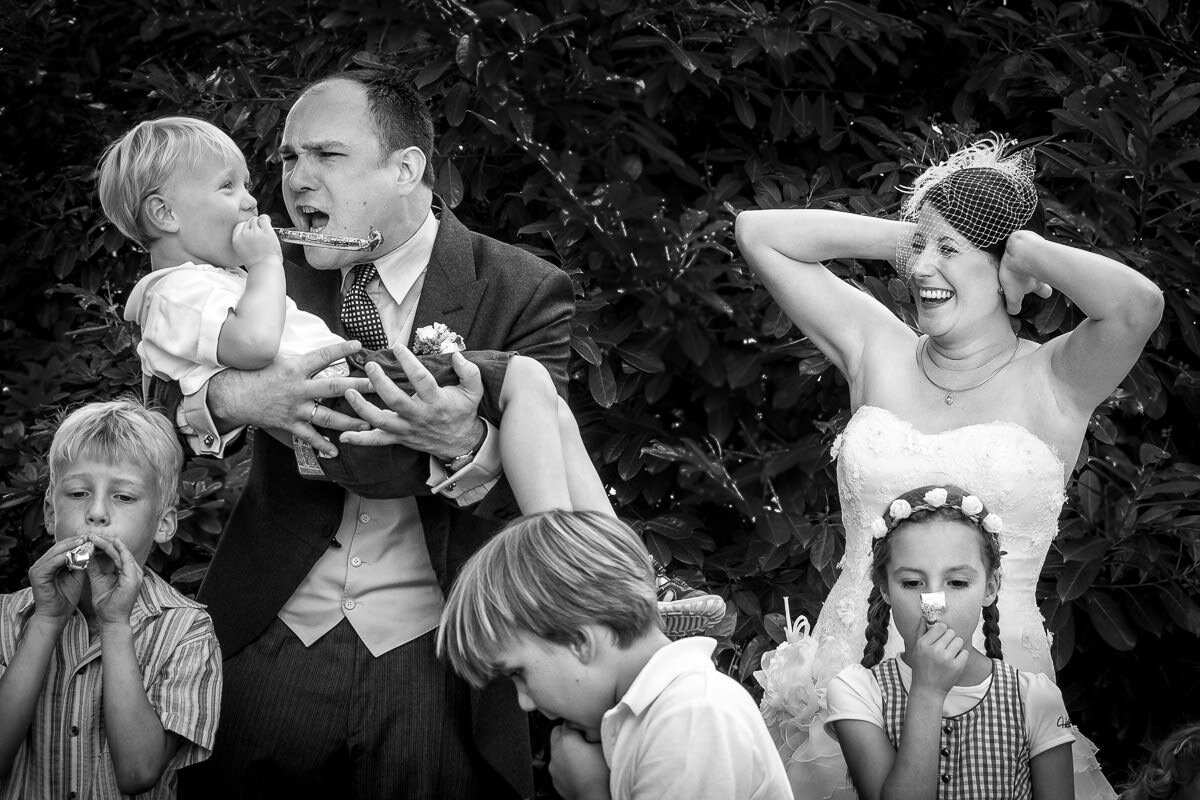Interview with Katrin Küllenberg, Award Winning Wedding Photographer
What is photography for you?
For me photography means creative memories. It is not just being there in this moment, clicking the shutter, but conveying a certain feeling and atmosphere.
The photographer is not neutral. Though I am a documentary wedding and family photographer and do not interfere into the activities before my camera, my work is still extremely subjective. Just by choosing my position, my lens, the moment I create the story as I feel it.
But this is also what makes Photography not just a documentary medium. My couples and families choose me because they want to know how I see their world and show them the beauty in the ordinary.
What’s typically in your camera bag?
Beside my cameras and lenses I always take a mirror and a piece of glass with me. Especially when I shoot a wedding or whole Day in the Life there comes a point when I feel I exhausted every possible angle and situation. That’s when I start playing with reflections. It is not just a gimmick. It often helps me to fill my images with new information and layers. Wedding photographers are far more prone to use these tools. I hardly ever see them in family documentary and I often wonder why. My families love to see those images they could not have imagined themselves. They are funny, weird and often insanely beautiful.
From your point of view, what makes a good picture?
A prerequisite for every good picture should be good light , framing and a moment. Especially in documentary photography, wedding or family, the moment is key.
What or who influences your work the most? Where do you draw inspiration from?
I have always loved street photography. The work of Martin Parr and Dougie Wallace is a big inspiration and I wish I could be as straightforward as they are. But then, I am working with and for paying couples and families, not just for myself, and that will always render my approach more kindly to the world I portray.
The photographic work by David Hockney is a another major inspiration. Though he proclaims that photography will never be able to transport as much content and emotion as a painting, he has, nevertheless, used photography in multifaceted creative ways. His collages from the 80s have taught me how important it is to see how a scene before you develops, to incorporate many layers to tell a more interesting story.
What’s been the biggest highlight in your photography journey so far?
There have been many highlights in this journey. Looking back I am amazed how far I have come, something I would never have imagined when I was starting six years ago.
Becoming one of Fearless Top 10 photographers 2016 was definitely something to bring out the champagne for! But though winning awards and being chosen as a juror has brought a big boost to my self-confidence, it is no longer so important in my life. Today my highlight is when I deliver my images to my clients and see what joy my work brings to their lives.
If you could give yourself one piece of advice when first starting out, what would it be?
There is no epiphany today like “ had I known this six years ago, I would have become a better photographer”.
Rather, I often think that if I had known about all what it needs to become a professional photographer I would have been too scared to start. Building your own website, getting a portfolio, presenting yourself in public, organizing your office life - there is so much you need to do but, now, I know you can learn just everything if you want to.
My advice to other photographers just starting out is not to invest all their money into equipment but go and take a lot of workshops with photographers whose work you admire. I did that and it really helped me a lot to find my own style, learning how to organize my shoots and in general it improved my technique and creativity
How do you decide when to click the shutter? What makes you say “Ah, I have to click right now!”
As a photographer you have to anticipate. If you see the perfect moment and then decide to take the picture, 99% of the time you will be too late and the moment will have passed. So I have to think ahead and position myself where I expect that circumstances will favor me with a good moment.
Even if I catch something great by chance, it will sometimes be ruined because I wasn’t in the right spot , did not find the right light or framed too tightly. Of course, there will always be moments when you know exactly that you hit the jackpot and it may only take one click but, as I said, it is the jackpot and not a matter of course.
The best photographers in the world shoot thousands of images during a whole documentary day. They are not only great photographers but also amazing editors. To get to the nugget you have to sift through a lot of plain soil.
This is one of the major lessons in photography: To get better you need “to shoot more crap”, as Martin Parr likes to advise his students.
Thank you for chatting with me, Katrin!! I am so excited about your Wedding Photography course!
We feel so lucky to have you as an instructor on the DFP Education Team and are looking forward to learning more from you.
Be sure to check out Katrin Küllenberg’s Instant Access Workshop, here!
And be sure to Follow Katrin’s Work:
https://katrinkuellenberg-familienfotografie.com
https://www.facebook.com/katrin.kullenberg
https://www.instagram.com/katrinkuellenbergphotography/

